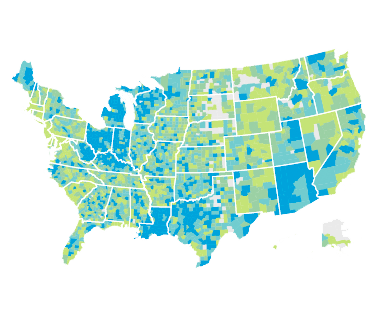美国政府预计,今年美国家庭平均将在汽油上节省700美元, as the price of a gallon of gas has fallen by nearly $1.50 from its peak of $3.70 in April 2014 and is projected to remain low through 2015. But who feels the biggest increase in spending power? 消费者花了多少额外的钱,花在了什么地方?
直到现在, 这个问题的答案来自于基于综合数据的调查或估计,结果表明,在泵上节省的资金中,只有不到一半被使用了. 然而, 12bet官方研究所的这份报告显示,个人消费了大约80%的额外收入. With lower gas prices expected to last through the year, 这些额外的可支配收入刺激了消费者在汽油以外的其他类别上的支出.
我们的数据, 调查对象是大通银行5700万普通借记卡和信用卡客户,显示了汽油价格下跌对美国各地的影响. These four findings cover gas spending and savings, geographic location, age and income level, 消费者 spending.
找到一个: 天然气支出和与天然气价格下跌相关的储蓄在美国各州之间差异很大.S. 个人.
2013年12月至2014年2月油价高企期间,美国人每月平均花费101美元. 油钱花得最多的人(油钱花得最多的20%)每月用信用卡和借记卡在油钱上花费359美元, more than triple the typical American, 而天然气消费低的人(天然气消费最低的20%)每月只花2美元, less than 2% of the typical American.
一年后, when gas prices hit their low point, the average American saved $22 per month on gas, but there was significant variation among 个人. 23%的人减少了50%或更多的天然气支出, 16% increased their gas spending by 50% or more.
发现二: 南部和中西部的人们在汽油上花费更多,当汽油价格相对于东西海岸下降时,他们的可支配收入增长更大.
发现三: 在加油站的储蓄占低收入个人月收入的1%以上,对美国年轻人的影响尤为严重.
Although gas spending was highest among men, 30 - 49岁, high-income earners, spending on gas represented a larger share of income for men, 18-29岁的年轻人和低收入者比其他个人更受欢迎
Increase in Purchasing Power from Drop in Gas 支出
值得注意的是, 2015年1月,天然气价格处于最近的低点,从而节省了1亿美元的天然气.1% of monthly income for low-income 个人, equivalent to 1.在预测总汽油支出时,不只是信用卡和借记卡交易,而是每月收入的6%.
发现四: Individuals spent roughly 80% of their savings from lower gas prices.
Individuals spent roughly 80% of their savings from lower gas prices. For every dollar less spent at the gas pump, 个人 spent roughly 80 cents (72 - 89 cents) on other things. Almost 20% of the gas savings were spent at restaurants, but department stores, entertainment and electronics and appliances also saw significant gains.
Data
来自全国超过5700万匿名借记卡和信用卡账户持有人, 我们创建了2500万普通卡用户和100万大通核心客户的样本.
Drawing from a universe of over 57 million anonymized customers, 我们创建了2500万普通借记卡和信用卡持有者以及100万大通核心客户的样本,以揭示汽油价格下降对消费者支出的影响. 我们考察了2015年1月价格下跌45%至近期低点时的消费行为,以确定谁的消费能力增长最快, how much money they spent, what they bought. 这些问题的答案很好地表明,如果天然气价格保持在较低的水平,我们可以预期未来会发生什么, 作为预测.
结论
我们得出的结论是,人们花在汽油上的积蓄比以前想象的要多, 而且,最近的天然气价格下跌正在推动非农业类个人消费的增长. 如果油价像预期的那样保持低位或继续下跌,这种对消费者支出的提振可能会持续下去,甚至会随着时间的推移而加强. 另一方面,汽油价格的大幅上涨可能会在一定程度上抑制消费者支出. 我们提出的证据表明,低油价带来的可自由支配支出的收益不成比例地流向了低收入个人, 年轻人, the Midwest and South, where people tend to spend more on gas. 这些地区和人口差异是政策制定者考虑汽油税改革的重要因素. 尽管天然气消耗增加对环境和基础设施造成了影响, lower gas prices are good news for the U.S. 消费者.



